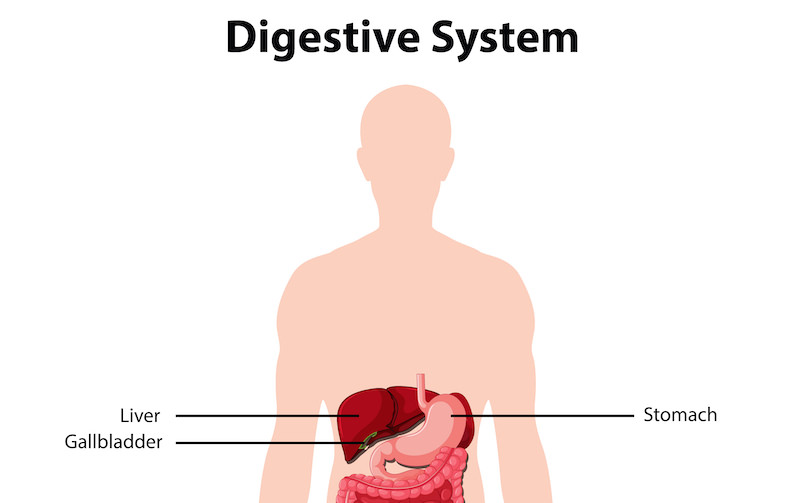Having a bad taste or breath can signify a bad gallbladder, but this is not always accurate since several things can cause it. Gallbladder problems arise when mineral stones block the bile ducts and store them inside the gallbladder. The mineral stones kept in the gallbladder are known as gallstones. When bad breath is persistent for a long time, you might think you have a bad gallbladder. It’s best to see your doctor if you think something is wrong.
We know that bad taste can appear from bacterial infections or poor hygiene habits. Yet, bad taste is not always related to oral hygiene problems. It may be a sign of another ailment that needs further investigation. When it is recurrent and does not improve with good hygiene habits, its origin likely relates to the gallbladder, liver, or both. The collection of toxins and low bile production can be responsible for this problem.
Jan Cubilla, a gastroenterologist, says that the gallbladder creates solid digestive secretions secreted and then passed into the stomach.
When mineral stones accumulate in the gallbladder, they clog the bile ducts. These cause infection and a series of unpleasant or annoying symptoms, such as fleeting pain, nausea, and vomiting. In some cases, especially after eating a fatty meal. But these are not the only ones.
Another possible effect, witness to gallbladder obstruction, is bad breath. In this sense, could bad taste be a sign of gallbladder disease?
What is a gallbladder?

The gallbladder is a pear-shaped muscular storage organ located under the liver. Many people don’t even know it exists because it is small. Still, it is an essential element in our body as it stores bile and helps us digest.
Bile is a fluid produced in the liver which helps you with digestion. Bile reflux occurs when bile backs up (refluxes) into the stomach or the tube connecting the mouth and stomach (esophagus).
Suppose you experience abdominal problems and suspect you have bad breath. It may be a sign of issues later on relating to the gallbladder. Thus, it would help if you compared the symptoms of gallbladder disease with the warning signs.
If you experience any combination of these symptoms and signs, it is time to see your doctor,
Internal symptoms of gallbladder disease
- Intense pain in the upper right abdomen, especially after a heavy meal which can last from minutes to hours.
- Sudden fever.
- Nausea or vomiting.
- Clay-colored stools. The lighter color results from insufficient bile (that is, it blocks the gallbladder ducts).
External signs of gallbladder disease
- Excessive bad taste or breath.
- Itchy skin rashes.
- Tongue coated in white, even after you have brushed.
- Offensive body odor and yellowish skin.
- Yellow, discolored eyes and dark circles under the eyes.
Bad taste by itself does not mean that you have gallbladder disease. Because it is scarce, bad breath comes out of nowhere due to poor oral hygiene. You should contact a doctor if your bad breath is offensive and coincides with other gallbladder disease symptoms, including intense abdominal discomfort.
What happens when the gallbladder releases too much bile?
When digesting food in the stomach and intestines, the gallbladder discharges bile through the bile duct tube. The gallbladder and liver are connected to the small intestine by this duct.
If something prevents bile from flowing via the bile ducts, the gallbladder is more prone to difficulties. Gallstones are a common cause of this. A component in the bile hardens, resulting in the formation of stones. Cancer can develop in the gallbladder, albeit a less common complication.
Often, removing the gallbladder will address your condition because the gallbladder is not a vital organ in the body. Besides the small intestine, bile has many routes to travel through.
The removal of the gallbladder is an intervention performed in adults. But, the increasing rate of obesity in children has led to an increase in pediatric patients with gallstones. According to a study, cholecystectomy is a safe intervention also in children under 18 years of age.
Diagnosis and treatment
To diagnose gallbladder disease, the doctor performs a complete abdomen examination. It will consist of checking for abdomen pain and performing one or more of the following tests and procedures.
Some of them are:
- Detailed medical history: It is crucial to keep track of any symptoms and personal or family history of gallbladder illness. Having your general health evaluated might also help establish any more indicators of chronic gallbladder disease present.
- Physical examination: The doctor may generate signs during the abdominal exam. This maneuver allows the gallbladder to be felt and could show gallbladder disease.
- X-ray of the chest and abdomen: With symptomatic cholecystitis, stones will appear in 20% of X-rays of the stomach if they contain calcium. A chest x-ray may reveal pleurisy or pneumonia. A routine radiograph does not exclude the possibility of further tests.
- Ultrasonography: This is the primary diagnostic method and usually reveals the presence of gallstones, thickened walls, or any other problem in the gallbladder. Ultrasonography produces images with an instrument that generates sound waves.
- Other investigations: Blood tests detect increased white blood cells and liver function.
The first episode of gallbladder inflammation is often treated with antibiotics when no stones are present. If the patient recurs many attacks, the doctor recommends surgery. He inserts a camera through three holes in the belly, either openly or laparoscopically.
This surgery makes recovery more accessible and faster, with almost no scarring. If there are no urgent complications, most surgeons prefer this method because it’s fast.
FAQs
Can you taste bile in your mouth?
The taste of bile in the mouth is a common condition that affects many people. The bitterness that appears in the oral cavity can mean various diseases. Still, most often, we are talking about problems of the digestive tract.
Discomfort is manifested in some situations if a person has taken plenty of alcoholic beverages or overeaten fried or fatty foods. We consider such phenomena quite normal. Thus, you can taste bile in your mouths.
How do you get rid of the taste of bile?
When a symptom such as a bitter taste in the mouth occurs, people do not hurry to see the doctor. They attempt to deal with it on their own, seizing or drinking an unpleasant feeling, as well as using various sorts of washing.
Since the taste of bile in the mouth can be caused by many factors. It would be best to study the variations and probable reasons for its presence to get rid of bile taste.
How do you know if it’s acid reflux or gallbladder?
It is hard to tell the difference when having acid reflux or gallbladder symptoms. Both acid reflux and gallbladder mimic each other’s signs. But, you may feel tenderness in your upper right abdomen or have a sudden worsening of discomfort.
If you develop heartburn pain, that does not subside after an hour. Fever and chills are also signs that your gallbladder has an infection. So, you should consult a doctor right away once you notice these symptoms’ differences.
What are signs that your gallbladder is messed up?
If you fail to contact the doctor at the early stages after confirming you have a gallbladder. It might get worse, and the symptoms afterward can mean your gallbladder is messed up.
The symptoms include unusual urine or stool, fever, chronic inflammation, and many more at later stages. The urine looks dark, and the poop becomes brown when bile salts are released into it.
When can I call the doctor after noticing gallbladder symptoms?
If you notice that you have started to get a bad taste in your mouth and bad breath that you can’t get rid of, write down how long it lasts.
If it lasts 10 days, talk to your doctor, especially when you get up in the morning, and notice a slight fever. The fever is usually present in the morning and the late afternoon with other gallbladder symptoms.
Conclusion
Most terrible tastes or breath in the mouth results from various circumstances ranging from personal hygiene to several diseases. It means having a sour taste is not enough to conclude that you have gallbladder disease. Having a bad taste for a long time alongside other gallbladder symptoms suggests that you have the disease.
The proper way to confirm your suspicions is to pay attention to the several symptoms listed in the article. After which, you meet your doctor to give a professional confirmation on the issue.


